For the past few weeks, we’ve been putting the spotlight on the healthcare sector for Healthcare Biometrics Month at FindBiometrics. As one might expect in early 2021, it has been a timely topic, with the impact of the COVID-19 pandemic being felt across every part of healthcare in which biometric tech is playing a role. But we’ve also taken a look at some of the longer-term, fundamental trends that have been in play as the sector embraced biometrics in recent years.
Now, as March comes to a close, it’s time to look back at some of the key insights to be gleaned from our dedicated coverage during a particularly apt Healthcare Biometrics Month.
The Fight Against COVID-19
Our first in-depth feature for Healthcare Biometrics Month kicked things off by addressing the elephant in the room directly. COVID-19 is the defining healthcare issue of the year – and probably the century (so far) – and biometric technologies have already started to play an important role in fighting back against the virus.
As our feature detailed, there has been remarkable innovation in the use of biometric wearables to detect the signs of infection. Researchers have been exploring the use of devices like fitness-tracking wristbands to monitor physiological biometrics that can indicate early signs of infection, and even the U.S. military has gotten involved in this kind of experimentation.
Meanwhile, biometrics are also playing a role in emerging immunity credential apps designed to prove that users have tested negative for COVID-19 or been vaccinated. It’s critical for such apps to be reliably tied to the health results of the legitimate end user, and this can be ensured through the use of biometric authentication.
These are two of the most prominent examples of biometric innovation in the fight against COVID-19, but there’s plenty of other experimentation underway as well, as health experts seek to fully realize the potential of biometric tech in this critically important struggle.
How Biometric Patient ID Can Save Money and Lives
From there, we turned to deeper trends in healthcare biometrics that predate the outbreak of COVID-19. One of the clearest advantages that biometric technologies offer in healthcare is in patient identification, and biometric patient ID solutions have been gaining ground for years. Tying a patient and their associated medical records directly to a biometric credential ensures that they can be reliably identified in every instance of the provision of care – even if they aren’t able to identify themselves due to incapacitation. This can potentially lead to improved delivery of care, and even better patient outcomes.
But biometric patient ID serves a dual role. In addition to facilitating better care, it also eases the administrative burden on healthcare providers. Patient records are easily retrievable, and duplicate records are eliminated, freeing up resources for a healthcare sector that has become all the more heavily burdened in the wake of the pandemic.
What’s more, biometric patient identification can play important roles outside of the hospital, such as in the provision of controlled substances, further helping to improve outcomes while reducing the strain on the healthcare system.
The Remote Care Frontier
That line of thinking was carried forward into our most recent in-depth feature for Healthcare Biometrics Month, which looked at another longstanding trend in the sector: remote care. This is the concept of enabling access to healthcare services from the comfort of the patient’s own home, and it’s an area in which biometric technology can play a vital role. A number of clinical-use wearable devices are now available that can track important physiological metrics, which can in turn be assessed remotely by healthcare practitioners.
Beyond wearables, a number of other devices have emerged that take advantage of biometrics to deliver care, from pill-dispensing machines that use biometric technology to authenticate patients, to biometric kiosks that can be deployed in grocery stores and community areas. In Vancouver, public health officials have even deployed opioid vending machines as part of an effort to combat a deadly overdosing crisis in the city. It’s another novel and surprising approach to remote care, and one that could save lives.
The Experts Weigh In
With these in-depth features having delineated the major trends in healthcare biometrics, we concluded Healthcare Biometrics Month with an expert discussion that went deeper on some of the key issues, and pointed to a few more things to consider. Originally broadcast live on Tuesday, March 30th, the webinar featured high-level executives from some of the biggest names in healthcare biometrics today: Veratad CEO John E. Ahrens; TECH5 CEO and co-founder Machiel van der Harst; and IDEMIA’s Senior Director of Digital Identity in North America, Tarvinder Sembhi.
The webinar also featured Rod Piechowski, the Vice President of Thought Advisory for HIMSS. The Healthcare Information and Management Systems Society is the most prominent healthcare IT alliance in the world, and the perspective that Piechowski brought to the table generated some interesting synergy with the biometrics experts on the panel.
The webinar was recorded and is available to view on-demand for free. As the above-mentioned features for Healthcare Biometrics Month made clear, the use of biometric technologies in healthcare has been ramping up for years, and been further accelerated in the wake of COVID-19. The overarching trend is a hugely important one that will continue to deliver benefits to healthcare provider and patients alike.
*
Healthcare Biometrics Month is sponsored by IDEMIA, TECH5, and Veratad.
–
March 24, 2021 – by Alex Perala


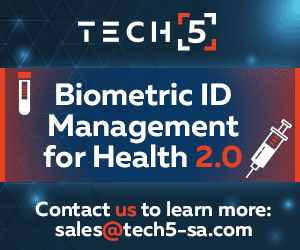

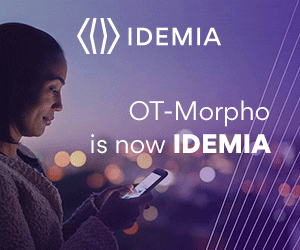
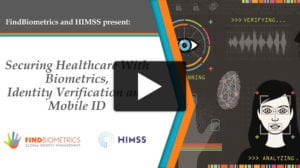


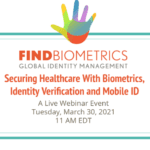
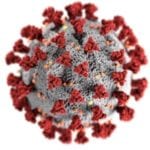

Follow Us